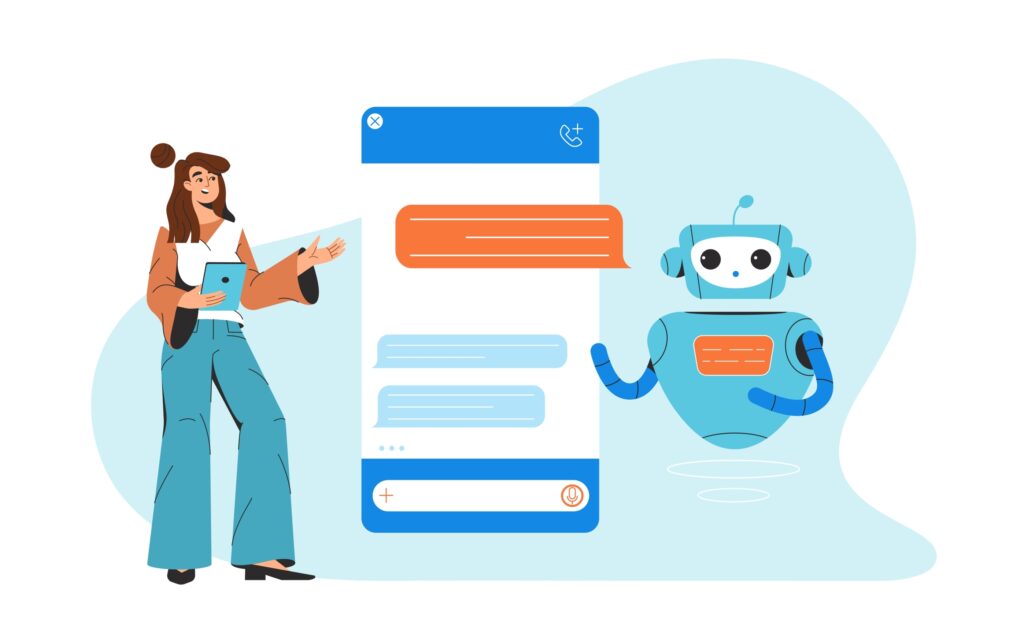Text messages from your friends are personal, so why shouldn’t SMS campaigns be the same?
On Tuesday, AI marketing and messaging platform Attentive announced products that allow brands to personalize text messages by applying a mix of machine learning and generative AI to their first-party data.
Attentive also has an existing solution to create email campaigns using AI technology to personalize subject lines and send product recommendations rooted in customer data. It’s taking a similar approach to SMS (although text messages don’t have subject lines, of course).
Regardless of the channel, the purpose is to create personalized interactions that mimic the in-store experience.
At a physical store, a sales associate can ask a customer what brought them in and if there’s anything they need help with. “There’s no equivalent of that online,” said Attentive CEO Amit Jhawar.
Because SMS is a real-time communication channel, it can fill that need.
More than 100 brands participated in closed beta tests of Attentive’s AI-powered SMS products over the past six to eight months, including Reebok, Brooks Brothers, Forever 21 and Hot Topic. On average, brands in the beta saw revenues rise 115%, purchases 117% and clicks 120%, according to Attentive.
Attentive’s AI text tech
As with email, Attentive puts a pixel on a brand’s website to record information about site visitors. Browsing behavior along with purchase data forms the backbone of the company’s AI models, Jhawar said.
Attentive feeds this data into propensity, affinity and intent models to derive insights about the consumer. For instance, Attentive can determine whether someone is just browsing or serious about buying something, as well as their preferences (like size, color or style) and whether they had a positive experience with previous purchases.
Advertisers can use a generative AI feature within the platform to craft individual messages to people who opt in to receive SMS messaging – a common email marketing tactic that Attentive is bringing to SMS. Jhawar declined to name the specific large language models that underpin the products.
Attentive trains its generative AI tools on a brand’s voice and tone by analyzing content on the brand’s website and all past texts Attentive has sent on the brand’s behalf.
Advertisers can also configure their style preferences, including how much to use emojis and capitalization rules, and select the tone, such as communicating scarcity or urgency or encouraging engagement.
Attentive’s customer Hot Topic is one example. Rather than simply sending a “We saved your cart for you” message to someone who didn’t complete a purchase, Hot Topic uses playful language that fits its brand. For a plush toy, the message might say, “Don’t let this cozy companion slip away. 🚀ACT FAST, save it from loneliness.”
And for a promotional message – say Hot Topic sends a text pushing a dress that might soon be out of stock – Attentive enables interactivity. If the recipient follows the link only to find that their size isn’t available and responds to that effect, the system can automatically reply with a link to check out similar items in the customer’s size.
Don’t send too many messages and other handy advice
But SMS marketing comes with some channel-specific quirks.
Unlike email, for example, which is priced based on list size, cellphone carriers charge for every SMS message that gets sent.
That’s “a hard lesson a lot of brands learn early,” Jhawar said. “If you over-message people who are not interested in your product, you can burn a lot of money quickly.”
But there’s another pitfall to sending too many messages: People hate spam, which is true for email and even more so for text.
Attentive offers two-tap opt-in tech to make it easy for customers to sign up while adhering to strict SMS opt-in rules, Jhawar said.
Still, brands should be judicious about SMS message frequency, and a good rule of thumb is not to bombard customers with multiple messages per day or (god forbid) per hour.
“There’s a certain number of messages people are willing to accept,” Jhawar said. Three to five messages a week is typically the sweet spot to keep people up to date about brand happenings. “If you go much more over that,” he said, “you’re gonna start to see people opt out or unsubscribe from your messages.”
But ideal message frequency depends on the category, Jhawar said.
Take fast fashion, where products launch and sell out rapidly. “If you’re dropping new sneakers, people want a message every couple of days,” Jhawar said. “They don’t want to miss out.” But for a considered purchase like a mattress, the right frequency might be more like once every few months.
In any scenario, however, brands should aim to be helpful rather than annoying. They should also personalize messages to the individual rather than doing the text message version of spraying and praying, according to Jhawar.
If a brand suggests tan enhancers or another irrelevant product to someone who needs a specific sunscreen or lotion, for example, Jhawar said, the customer might conclude, “It’s obvious that I don’t matter to you and you don’t know who I am.”















